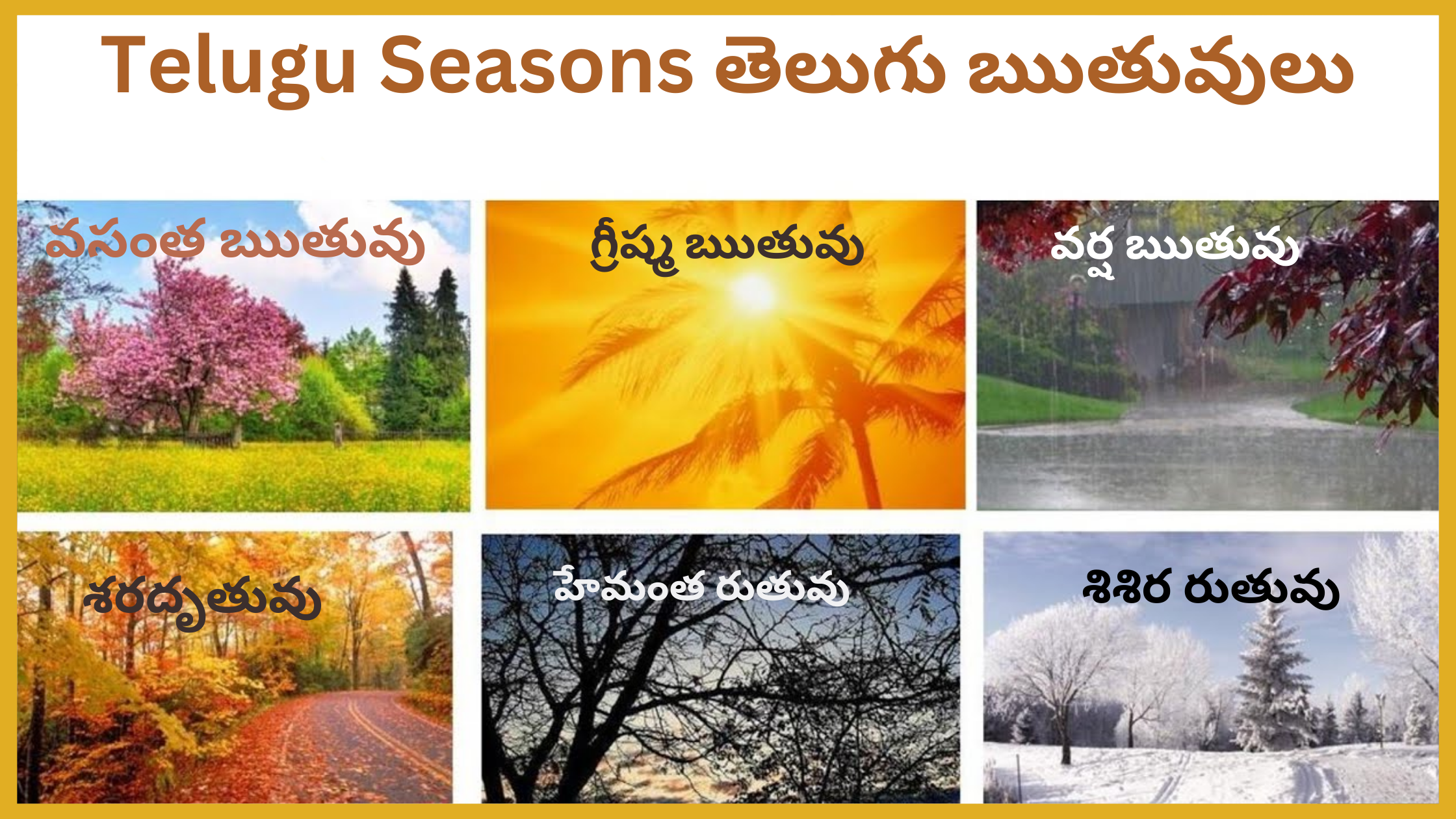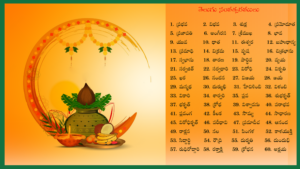Telugu Seasons in English | Ruthuvulu in Telugu (తెలుగు ఋతువులు): Telangana and the Andhra Pradesh state people follow the Telugu calendar and seasons as Telugu Ruthuvulu. All people have to be aware of the changes of occurrence in their daily lives. Some changes are to be made by the individuals in their daily lives based on the seasonal changes which might help them to be healthy.
Formation of Telugu Seasons తెలుగు ఋతువులు (Ruthuvulu in Telugu)
Table of Contents
The Telugu year is divided into 6 Telugu seasons that are characterized by distinct weather patterns, daylight hours, and temperature. The changing seasons are caused primarily due to the Earth’s axis tilt based on its orbit around the sun. When the earth receives the varying amount of sunlight from the different parts of the planet it shows the result of seasons.

Importance of Ruthuvulu Seasons
Seasons play an important role in several aspects of human life, environment, and agriculture. The farmers depend more on seasons to sow the seeds, for crop cultivation, and to perform harvest. Some seasons are suitable for a certain variety of crops. Based on those conditions the farmers plan to get a better yield of crops.
Water is an important need in our life. The availability of water resources is mainly based on the season. In the monsoon season, the water bodies like lakes and rivers maintain high water levels that help drinking water supply, agriculture, and hydroelectric power generation.
Cultural and festive events are marked in many societies. In specific seasons the festivals are noted. Festivals and traditions occur during a particular season. Important events like religious observations or harvests are made during the period. The contribution of the season leads to the social fabric and cultural identity of the community.
List of Telugu Season Ruthuvulu:
According to the Telugu calendar, six seasons are formed. The seasons in the Telugu language are called “Telugu Rutuvulu” (తెలుగు ఋతువులు). They are
- Spring Season – వసంత ఋతువు (Vasntha Ruthuvu)
- Summer season – గ్రీష్మ ఋతువు (Greeshma Ruthuvu)
- Rainy Season – వర్ష ఋతువు (Varsha Ruthuvu)
- Autmn Season – శరద్ రుతువు/ శరదృతువు (Sharad Ruthuvu)
- Winter Season – హేమంత రుతువు (Hemantha Ruthuvu)
- Winter and Fall season – శిశిర రుతువు (Sisira Ruthuvu)
వసంత ఋతువు (Vasntha Ruthuvu): In this particular season sun’s more direct light reaches the earth leading to a gradual increase in temperatures and gradual warming of the daylight hours are observed. This is the season from April – June months which is suitable for farmers for cultivating several agricultural products. At this season flowers bloom, bees provide nectar, and birds continue the pollination process.
గ్రీష్మ ఋతువు (Greeshma Ruthuvu): This season is known as the summer season starts which starts in June and ends by August. It reduces rainfall and increases evaporation. High energy consumption is observed due to the increased heat. Farmers plan to plant and harvest their crops during this season. The season offers opportunities for tourism and outdoor activities.
వర్ష ఋతువు (Varsha Ruthuvu): This season is also referred to as the rainy season or monsoon seen between August and October. The interplay between the high and the low pressures particularly in the moment of air masses. The situation leads to the formation of precipitation and clouds. The groundwater gets recharged during the season. Tourists places with science and beauty are attracted at this time.
శరద్ ఋతువు / శరదృతువు (Sharad Ruthuvu): The particular season is called as autumn that falls from months October to December. Mild temperatures are observed and it is a transition from summer to winter season. Day and night are considered equal time. Less direct sunlight is received at the time by the earth. Farmers perform harvest during these months. Several animals or birds migrate during the season in preparation for the upcoming climate.
హేమంత ఋతువు (Hemantha Ruthuvu): Winter season is also known as Hemantha Ruthuvu. Short days are formed at the start of winter from December to February month. Less sunlight is reached to the earth in the season which leads to cool temperatures. Farmers deal with the winter crops. A balanced water cycle is maintained and water need consumption is met by all. Recreation activities and tourism visits are enjoyed by nature lovers in this season.
శిశిర ఋతువు (Sisira Ruthuvu): This season falls between February to April. Very cool temperatures are experienced by this time. Trees shed their leaves and create new shades of colors like red, yellow, and orange.
The six seasons along with their full details are provided on the page by our www.swachhvidyalaya.com website. The knowledge related to any of the topics in education can be easily accessed and understood by the format of the article that is presented. We wish that the article answers the questions you had and gets them clarified.





